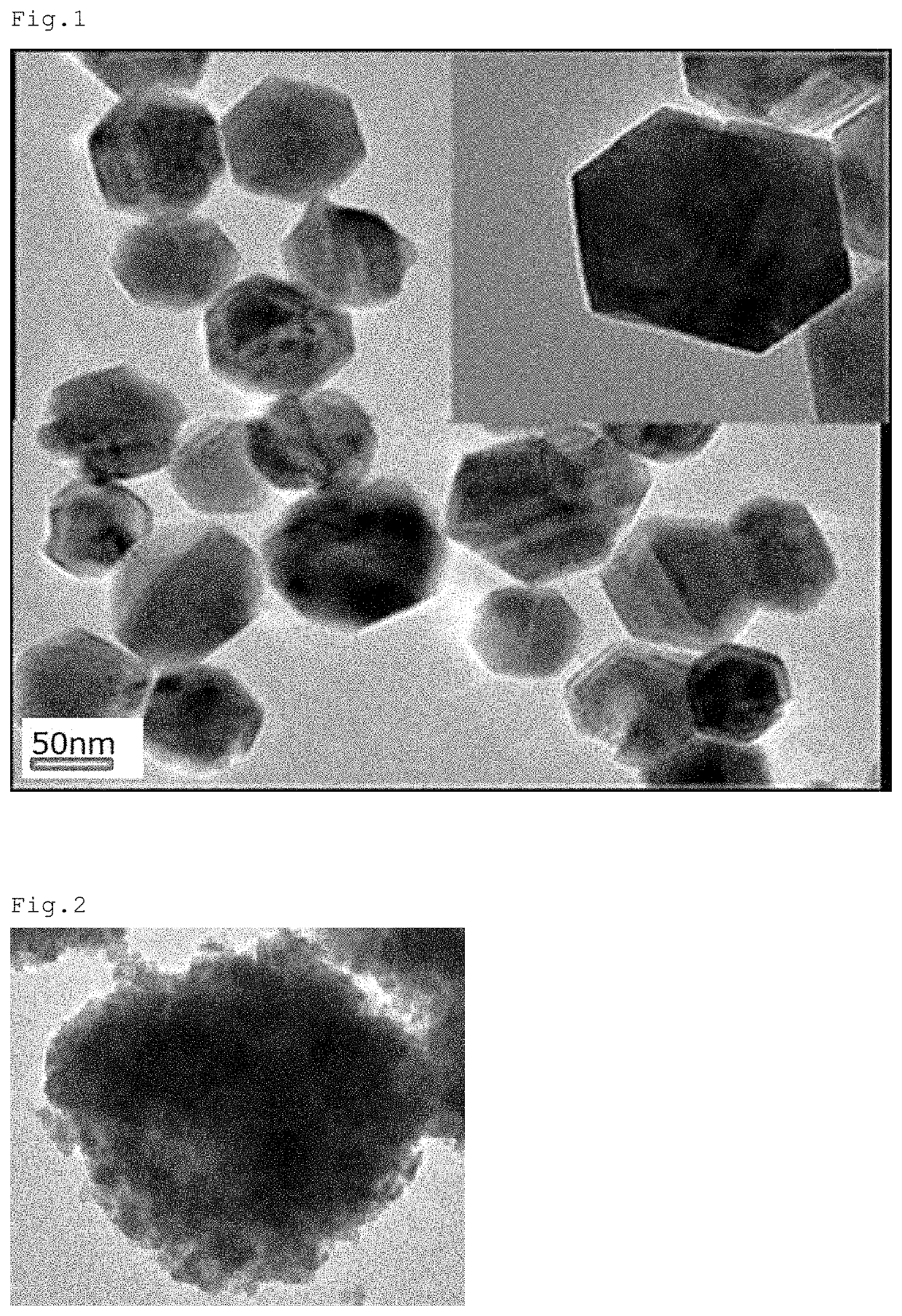Polishing agent for synthetic quartz glass substrate and method for polishing synthetic quartz glass substrate
a technology of synthetic quartz glass and polishing agent, which is applied in the direction of lapping machines, other chemical processes, aqueous dispersions, etc., can solve the problems of insufficient polishing agent to meet current requirements, economic problems, and inability to stably use colloidal silica, etc., to achieve sufficient inhibition of defect generation, improve productivity and yield, and achieve sufficient polishing rate
- Summary
- Abstract
- Description
- Claims
- Application Information
AI Technical Summary
Benefits of technology
Problems solved by technology
Method used
Image
Examples
example 1
(Synthesis of Wet Ceria Base Particles)
[0072]A solution in which 1000 g of cerium(III) nitrate hexahydrate (Ce(NO3)3.6H2O) had been dissolved in 250 g of pure water was mixed with 100 g of nitric acid to obtain a cerium(III) solution. Then, 1 g of diammonium cerium nitrate ((NH4)2Ce(NO3)3) was dissolved in 500 g of pure water to obtain a cerium(IV) solution. Subsequently, the cerium(III) solution and the cerium(IV) solution were mixed to obtain a cerium mixed solution.
[0073]Under a nitrogen gas atmosphere, 4000 g of pure water was added dropwise into a reaction vessel. Then, 1000 g of ammonia water was added dropwise into the reaction vessel and stirred to obtain a basic solution.
[0074]Next, the cerium mixed solution was added dropwise into the reaction vessel, stirred, and heated to 80° C. under a nitrogen gas atmosphere. The heat treatment was thus performed for 8 hours, and a mixed solution containing wet ceria particles (base particles) was obtained.
[0075]Additionally, the avera...
example 2
[0082]A polishing agent was prepared by the same procedure as in Example 1, except that the content ratio (molar ratio) of cerium / lanthanum in the composite oxide particles was 50 / 50 (mol %)=1.0. The obtained polishing agent had a pH of 6.3. According to the electron microscope measurement, the polishing particles had an average particle diameter of 70 nm, the base particles had an average particle diameter of 60 nm, and the composite oxide particles had an average particle diameter of 10 nm.
example 3
[0083]A polishing agent was prepared by the same procedure as in Example 1, except that the content ratio (molar ratio) of cerium / lanthanum in the supported composite oxide particles was 60 / 40 (mol %)=1.5. The obtained polishing agent had a pH of 6.3. According to the electron microscope measurement, the polishing particles had an average particle diameter of 70 nm, the base particles had an average particle diameter of 60 nm, and the composite oxide particles had an average particle diameter of 10 nm.
PUM
| Property | Measurement | Unit |
|---|---|---|
| average primary particle size | aaaaa | aaaaa |
| particle diameters | aaaaa | aaaaa |
| pH | aaaaa | aaaaa |
Abstract
Description
Claims
Application Information
 Login to View More
Login to View More - R&D
- Intellectual Property
- Life Sciences
- Materials
- Tech Scout
- Unparalleled Data Quality
- Higher Quality Content
- 60% Fewer Hallucinations
Browse by: Latest US Patents, China's latest patents, Technical Efficacy Thesaurus, Application Domain, Technology Topic, Popular Technical Reports.
© 2025 PatSnap. All rights reserved.Legal|Privacy policy|Modern Slavery Act Transparency Statement|Sitemap|About US| Contact US: help@patsnap.com


